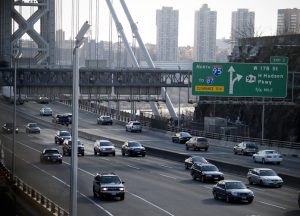 By Tim Maloney
By Tim Maloney
We started a conversation yesterday about how a plan to implement congestion pricing will affect parking in Manhattan. Continuing those thoughts:
While New York City is working to improve the subway system, many people who value flexibility and control will still find driving to be their best option. Some commuters will still pay the toll to enter the CBD without hesitation; let’s call them the Business Elites. These are the professionals who value their time over money. On the other side of the coin, drivers who value money over time are likely to park at a facility along the toll border and take an alternative mode of transportation for the last mile; these are your Savvy Commuters. Savvy Commuters may elect to supplement their drive-and-park with anything from public transit to walking or even ride-share if they are pressed for time.
Business Elites and Savvy Commuters both prioritize driving over the crowded subway system of New York City. During public transit upgrades, both drivers will prefer to drive due to construction delays and overcrowding. Once construction on the subway system is complete, the Savvy Commuters are expected to leave their cars at home and opt to take public transportation. By the time construction is finished, parking will have already adapted to the new demand.
The future of parking for New York City will adapt to demand. The city is already seeing the power that legislature has on parking, but parking is poised to be the solution to NYC’s congestion problem. With spots opening up within the CBD, so opens the opportunity for fleet and ride-share parking. Urban residents need to get where they are going, and car-share isn’t going anywhere. Once fleet vehicles are off the road and parked at a facility, the roads open up to be a pedestrian paradise.
New York City’s Traffic Mobility Act aims to decrease the number of cars entering Manhattan’s CBD, increase funding for public transportation and pedestrian safety, and decrease parking demand temporarily. Fewer cars parking downtown will create an opportunity for parking operators to generate revenue from new urban mobility models fleets, ride-share, and eventually autonomous vehicles to finally have a reliable place to park. As long as there are cars on the ground, there will be a need for a place to park. Parking is the solution to city congestion and the foundation for the fast-paced urban mobility ecosystem.
Tim Maloney is director of strategic partnerships with SpotHero.
